Ask Ethan: Are Black Holes Made Of Dark Matter?
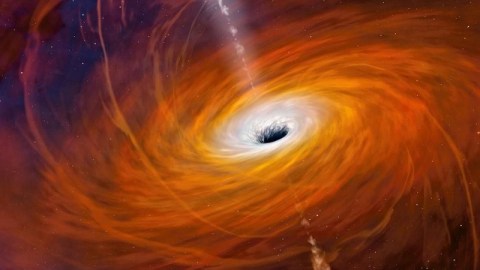
Black holes are the darkest objects of all. But are they made of dark matter?
When it comes to the Universe, few objects are more compelling, fascinating, or extreme than black holes. The unique result of an irresistible gravitational force, black holes are regions of space where so much mass is packed into such a small volume that nothing — not even the fastest forms of energy of all, like light — can escape from them. Because there’s a completely dark region of space where anything that crosses over it gets inevitably sucked in, and nothing from the inside can get out, we can never probe their inner structure to see what they’re made of. So, could they possibly be made of dark matter? That’s what Radhana Domala wants to know, asking on behalf of her child:
“My son is in 3rd grade, and he wants to know about dark matter and dark energy. His question is, ‘Are black holes made of dark matter?’ I am not sure how to help him.”
You came to the right place. Let’s not only find out, but let’s break it down in such a way that everyone can understand and enjoy the answer.
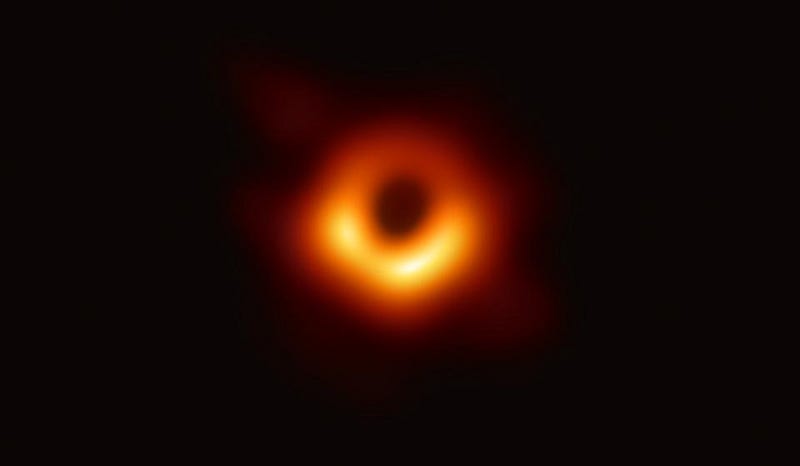
First off, let’s start with a simpler question: what does it mean for something to physically be “black,” and is that the same as being “dark” in the sense that we use it?
Something that’s black is literally defined by the absence of color of any type: any light that you shine on it, of any energy, any wavelength, or any intensity, will always be absorbed, and never reflected. A material that’s perfectly black will absorb anything that encounters it, and will simply heat up in response.
Even when something is black, though, it still gives off energy, or radiates. If you take an iron pot and put it on the stove, it will get hot; you won’t be able to see it, but you will be able to feel it. Above a certain temperature — around 525 °C (977 °F) — hot things, even if they’re completely black, will begin to glow red and give off light.

Black things absorb all forms of light and energy, and only emit light/energy dependent on their temperature. Dark things, on the other hand, will absorb light and energy, but won’t emit anything at all that’s detectable. That’s what makes something truly dark: it blocks all forms of light, but doesn’t give off any of its own.
So if that’s what “black” and “dark” actually are, what is a black hole and what is dark matter? Are black holes really black, and is dark matter really dark?
Let’s start with black holes. Black holes are regions of space with so much matter-and-energy in such a small volume that it creates what’s known as an event horizon. An event horizon is a boundary: anything outside of it can still escape if it moves or accelerates quickly enough, but anything that crosses the event horizon will be drawn into the central singularity regardless of what it does or how quickly it moves. From inside a black hole’s event horizon, even light — which moves at the fastest speed in the Universe — cannot escape.
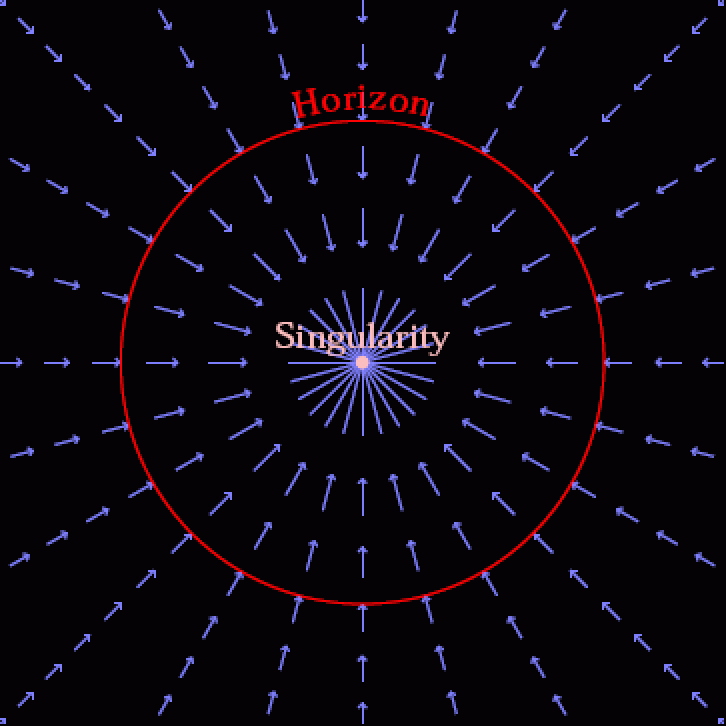
This sets up an interesting conundrum: are black holes actually black? The answer is yes: black holes are extremely black, perhaps the blackest things in the entire Universe. Yes, there can me matter outside of black holes that emits light, but that’s not coming from the black hole itself. The only thing that prevents black holes from being perfectly, completely black is the laws of quantum physics, which describe how the Universe, on the smallest length scales of all, behaves. Even in empty space itself, with no matter present, the rules of quantum physics still apply.
Close to a black hole’s event horizon, space is curved very severely; far away from a black hole’s event horizon, space is curved less and less severely, appearing almost like it’s perfectly flat. The difference between the quantum properties of curved and non-curved space causes a tiny amount of radiation — in the form of low-energy light — to be emitted: Hawking radiation. This is the only form of light that comes from a black hole, and it’s far beyond our ability to detect. As far as we can observe them, black holes are both completely black and also completely dark.

What about dark matter? How does it compare to “regular” matter?
Here’s where things get confusing, so buckle up. When we think about “normal” matter, we think about things like the matter in our Solar System: plants, animals, oceans, continents, planets, moons, and the Sun. If we only looked with our eyes — or with telescopes that could see the same type of light that our eyes see — almost everything that exists in the Universe would be dark.
The only non-dark objects would be:
- the stars themselves,
- light-emitting clouds of gas,
- exploding or dying stars,
- the remnants of those dying stars (like white dwarfs and neutron stars),
- failed stars that still glowed (like brown dwarfs),
- and dark objects, like planets, that were close enough to sources of light that they could absorb and reflect some of that light.

Normal matter that didn’t emit light, then would be the true “dark” matter, since that’s what absorbs light and doesn’t emit it. If you have a cloud of neutral gas in either interstellar or intergalactic space, that is a great example of matter that’s dark: absorbing the visible light that passes through it while not emitting any visible light of its own. But that’s just normal matter that doesn’t emit light; that’s not what dark matter actually is.
Instead, what we call “dark matter” is an entirely novel type of matter, which unfortunately has an inaccurate name. Dark matter isn’t actually “dark” as we understand it, because it doesn’t absorb light or prevent light from passing through it. What we should have called it, if we wanted to be precise, is “invisible matter,” because light simply passes through it as though it weren’t there at all. This goes beyond light: normal matter passes through it, and even other particles of dark matter pass through dark matter, too. It truly is invisible to every interaction we know about.

The only reason we know about this invisible matter at all — which I’m going to call “dark matter” anyway — is that it behaves like it has mass, and all masses in the Universe bend and distort the fabric of space. When we look at the light from distant objects, that light has to pass through that bent and distorted space, which means that the distant objects we see are going to appear distorted to us.
We’re not seeing distant stars and galaxies exactly as they are, but rather the stars and galaxies as they appear after passing through the equivalents of a fun-house mirror: where images are distorted because of what happens in between where the light leaves the object and arrives at our eyes (or telescopes). There are two types of distortions that occur: strong gravitational lensing and weak gravitational lensing, and both of them reveal the existence and necessity of dark matter.

So now, it’s time to put these pieces of information together, and ask the big question: how do we make a black hole? The answer is as straightforward as you might assume; you simply get enough mass (or matter, of any form) together in one region of space, and allow gravitation to collapse it down. Once you pass a certain critical threshold, it becomes not only possible to form a black hole, but it actually becomes inevitable.
This is easy for regular, normal matter, and we actually know of multiple ways that our Universe really does form black holes from normal matter. They are:
- a large, massive star will gain enough mass in its core that it experiences a core-collapse supernova, leading to a black hole,
- two neutron stars can collide, creating an event horizon and leading to a black hole,
- and a dense collection of matter, either in the form of gas or a star, can directly collapse, leading to a black hole.
There are other mechanisms that are possible in theory as well — such as accretion onto a stellar remnant — that could create a black hole, but simply haven’t been observed.
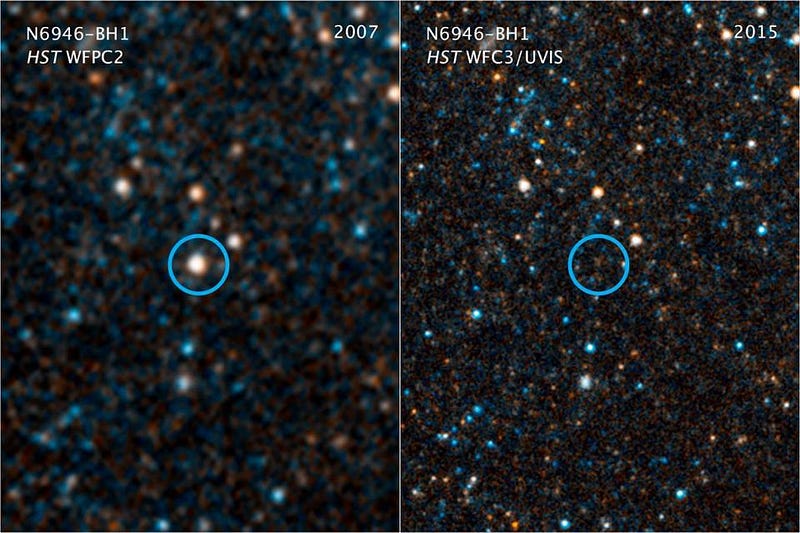
But dark matter has a big problem if we want it to form black holes. Normal matter can form these dense collections of objects for one reason: it can collide with other particles of normal matter, and those collisions can dissipate energy. You’re made of normal matter, and you can test this out by either rubbing your hands together back-and-forth or giving someone else a high five. When you rub your hands, you can actually feel the energy from it, because your hands heat up. When you high five someone else, you can hear the energy released (in the form of sound) and feel it (in the sting in your hand).
That’s energy being dissipated, and it arises because normal matter has real, physical interactions — such as collisions — with other forms of normal matter. But dark matter does not. As far as we can tell, it neither collides with normal matter or dark matter, and therefore can’t dissipate its energy, and therefore it can’t collapse. Dark matter, as it’s found in the Universe, is always diffuse and never dense, and therefore it’s only the normal matter that can make black holes, never the dark matter.
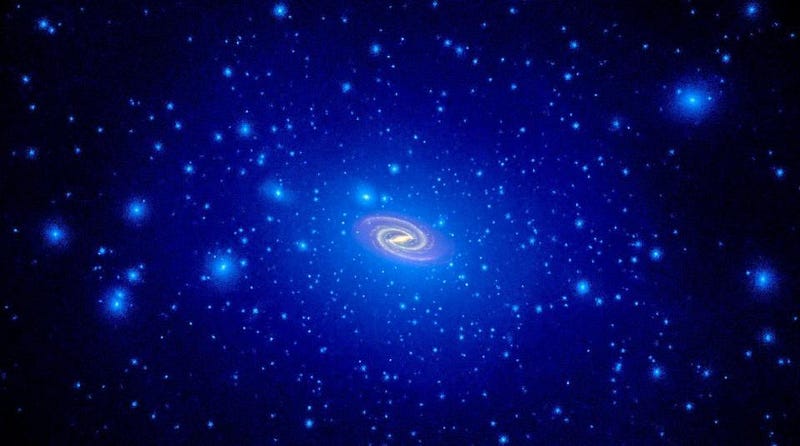
Once you have a black hole, everything that crosses over to the interior of the event horizon from the outside — including dark matter — will add to its mass. But to form a black hole initially, you need normal matter to do it. Only normal matter, which is capable of interacting, losing energy, and collapsing down into a very small volume, can get enough mass into a small enough space to lead to the formation of a black hole.
Although it’s highly speculative and not likely to reflect reality, there are two possibilities that scientists sometimes theorize about where dark matter could, conceivably, lead to a black hole, after all.
- The Universe could have been born with regions very rich in dark matter, and those could have directly collapsed to black holes. Those rich regions would have to be thousands of times richer than what we’ve observed, however.
- Or dark matter could have self-interactions after all that enable it to dissipate energy, but there are very tight constraints, and we’d likely have to violate them to make this possible.
Although the answer appears to be “no,” it’s still a fascinating question. After all, sometimes just asking the right questions can lead us to answers and insights we’d never have gotten otherwise!
Send in your Ask Ethan questions to startswithabang at gmail dot com!
Ethan Siegel is the author of Beyond the Galaxy and Treknology. You can pre-order his third book, currently in development: the Encyclopaedia Cosmologica.




